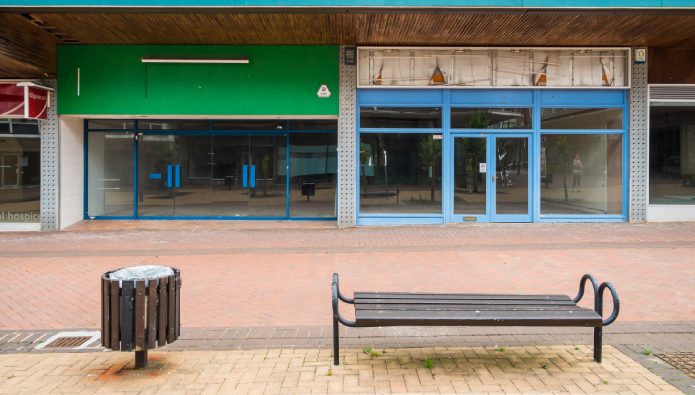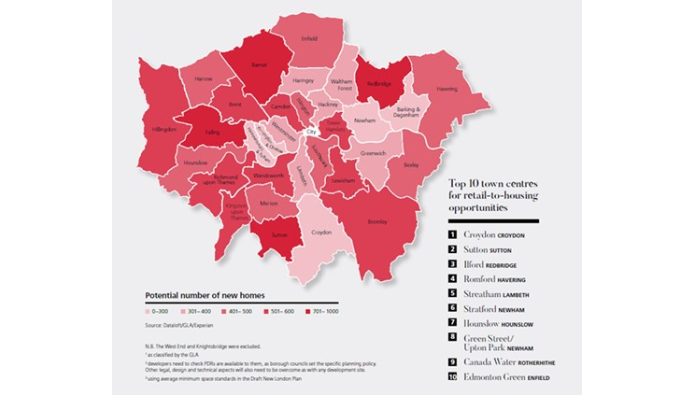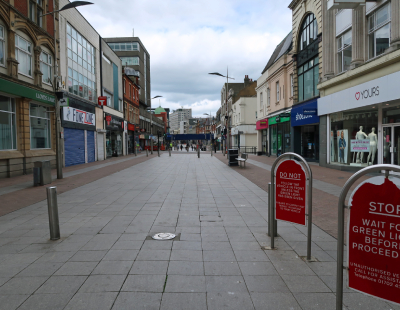“This can be seen with the collapse of retail empires [like] Debenhams and Arcadia, in which a huge glut of redundant space, equivalent to roughly 200 full-size pitches, will hit the property market.”

However, Fenner believes with this challenge comes the opportunity for asset owners to deploy commercially creative strategies that not only cut risk but create more value than ever before.
“In turn, this will give landlords cause for reflection and produce opportunities for new ventures and some alternate uses such as residential redevelopment,” he said.
Fenner adds that the future of the high street will depend on town centres becoming leisure destinations, in turn recapturing the thriving hub of activity.
To drive this bounce-back, repurposing disused retail space into residential – and encouraging people back into mixed-use, flexible and dynamic town and city centres – is the way forward.
How is this achieved?
Fenner says that, in today’s digitally-driven, experience-focused economy, retail owners need to best navigate societal shifts in order to get their assets back on the right track.
“At Navana Property Group, we believe the key to doing so is to follow three strands: cost effectiveness and operational efficiencies, revenue and income generation and strategic repositioning.”
Below, Fenner outlines what this means in practice.
Cost effectiveness and operational efficiencies
It’s crucial to get stuck into the detail right away. During this phase, retail owners should consider operational basics such as ensuring health and safety compliance and reducing operation costs through procurement management.
For example, the government has declared that, from April 6 2021, all applications must conform with National Space Standards, which sets minimum requirements on home sizes and quality. By executing sound and thorough due diligence, retail owners can get under the bonnet of the asset’s operational performance and financial health.
Revenue and income generation
Underperforming assets need skill to analyse and reposition. Navana Property Group champion an active and blended asset and estate management approach, in order to drive value via proactive and front-foot practical management of assets. Decisions should be made with a focus on the exit opportunity. For example, when retail owners look to repurpose their assets, they should look to improve the asset’s market attractiveness and saleability.
Strategic repositioning
To win the world of modern commerce, it’s important to think big and act brave. With more than 300,000 homes needed and increasing number of vacant buildings in town centres, there’s arguably a perfect storm brewing at the moment for redevelopment. By turning existing unused buildings into homes, we’re not only creating new homes, but are also recycling our building stock and reducing the need to develop on green-belt land, therefore helping preserve natural environments.
Moreover, through rebranding and marketing, it ensures a new-look high street, which in turn will entice investment in town premises once more.
A retail to housing revolution?
A leading London-based independent estate agent has claimed that market forces, new planning laws and social change will boost London’s smaller town centres, and has identified the top 10 town centres for retail-to-housing opportunities in London’s outer zones.
The research by Kinleigh Folkard & Hayward (KFH) set out to explore the scale of opportunity for new housing in London’s high streets under the new planning laws, announced by Housing Secretary Robert Jenrick to revitalise England’s high streets and town centres.
KFH says the Covid-19 pandemic has accelerated the home working trend virtually overnight, especially among office workers. “This, coupled with the alignment of favourable policy to revitalise town centres, could result in the next cyclical phase for our cities,” the firm adds.
The revival of the high street
The new planning policies, which came into effect in September 2020, along with the Future High Streets Fund, aim to provide a much-needed boost to the supply of new homes by cutting red tape.
They will also aim to contribute to the regeneration of town centres, especially in the outer London zones which have become increasingly popular during the pandemic thanks to their greater affordability, more local feel and greater provision of green space.
“To achieve this, the government has allowed for a wider scope of permitted developments rights (PDR) to be introduced,” the company, which has 80 branches across the capital, said. “PDR developments are considered less costly and less time-consuming to build. In high streets where land is at more of a premium, more emphasis is expected to be placed on ‘airspace’ development, with new homes being added on top of existing buildings.”
The report outlines the top 10 town centres in terms of the number of vacant commercial units that have the potential to become residential space, in addition to the opportunity at borough level. This is quantified by the amount of vacant retail space, vacant non-retail space, 50% of comparison retail space and any department store space present at ‘district’ level town centres.
In order to estimate the scale of new housing that could be delivered across London’s town centres, KFH converted the amount of possible floorspace for each high street into the number of two-bed homes using the average minimum space standards in the Draft New London Plan.
In total, it found that there is the potential to create 16,117 new homes across the capital, with Croydon, Sutton and Ilford identified as the top three centres for regeneration.
“The Mayor of London and councils need to work together to adapt to new demands from their residents, while at the same time managing the often conflicting objectives of central government,” John East, land and new homes director at KFH, said.
“This includes accelerating new home delivery, rejuvenating the high street and meeting green targets.”
The 20-minute neighbourhood
We recently discussed the idea of the 15-minute city, but lockdowns and the growing green movement have also added weight to the concept of the 20-minute neighbourhood, which shares many similarities.
The premise, once again, is that everyday amenities, such as shops, schools, workplaces, medical centres, banks, gyms and parks, should be within a 20-minute walk or cycle from home.
There has been a switch during the pandemic to help residents move safely within their neighbourhood, either by providing temporary cycle lanes and wider pavements or by introducing more low-traffic neighbourhoods. As people have been forced to stay local and get to know the area they live in, this has helped enliven many of outer London’s high streets.

Stats suggest that 80% of London residents are looking to live in a community with amenities for all ages, which means the concept of the 15-minute city or 20-minute neighbourhood can foster a sense of community and connection to a place, KFH argues.
It will enable residents to socialise locally, support local businesses and enjoy local parks, the firm adds.
“The legacy of the pandemic could be the renaissance of our local town centres. Many places within inner London are already 20-minute neighbourhoods and this is what makes them highly sought-after,” East concluded.
“The concept’s popularity is the reason why centres in the capital’s outer zones should embrace this city design narrative, especially as new housing is set to become a key component in the evolution of town centres over the coming years.”
You can see the full report – titled ‘From selling to dwelling: re-thinking London’s local high streets’ – by clicking this link.











.png)










Join the conversation
Be the first to comment (please use the comment box below)
Please login to comment